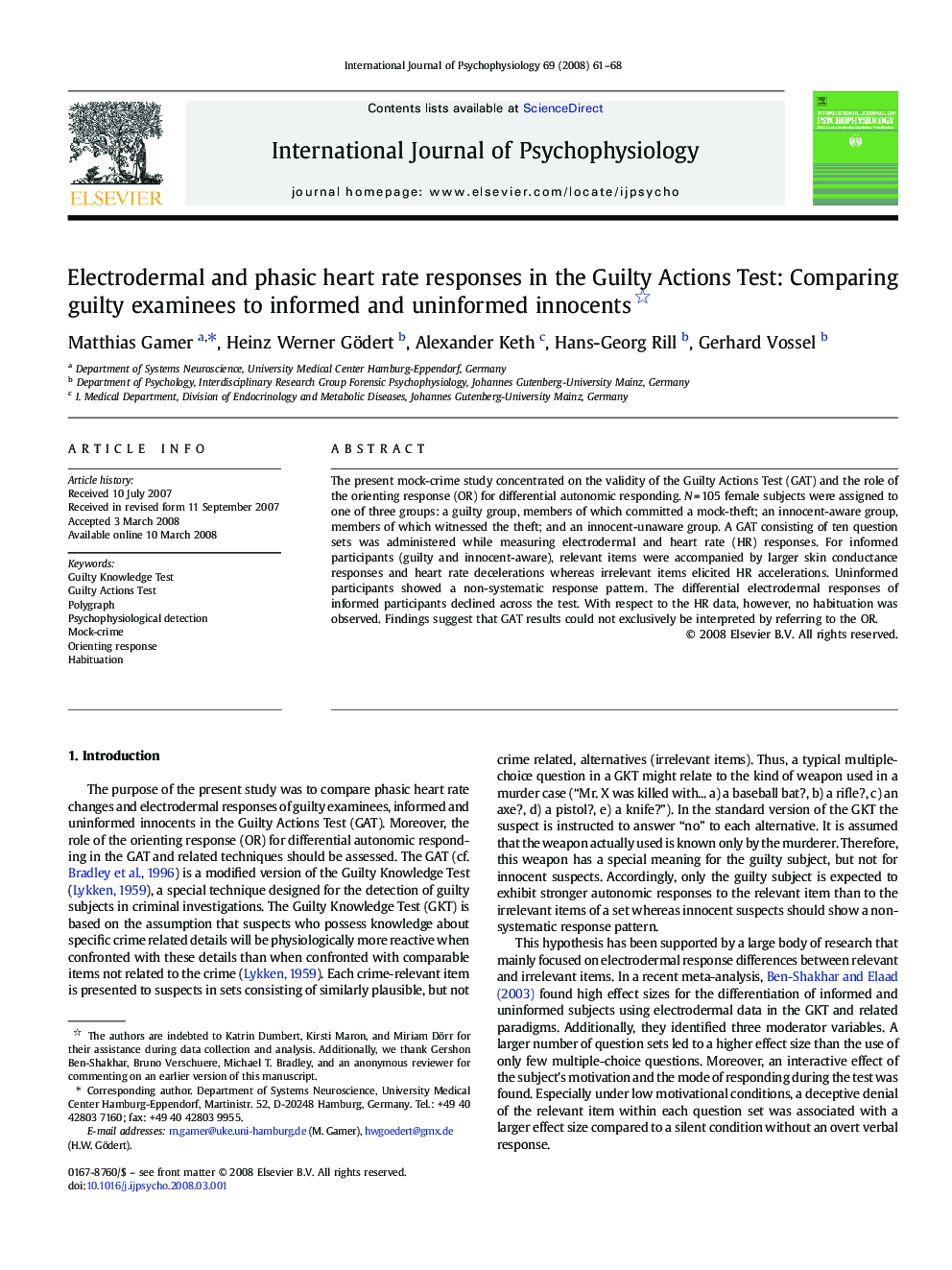| Article ID | Journal | Published Year | Pages | File Type |
|---|---|---|---|---|
| 931127 | International Journal of Psychophysiology | 2008 | 8 Pages |
The present mock-crime study concentrated on the validity of the Guilty Actions Test (GAT) and the role of the orienting response (OR) for differential autonomic responding. N = 105 female subjects were assigned to one of three groups: a guilty group, members of which committed a mock-theft; an innocent-aware group, members of which witnessed the theft; and an innocent-unaware group. A GAT consisting of ten question sets was administered while measuring electrodermal and heart rate (HR) responses. For informed participants (guilty and innocent-aware), relevant items were accompanied by larger skin conductance responses and heart rate decelerations whereas irrelevant items elicited HR accelerations. Uninformed participants showed a non-systematic response pattern. The differential electrodermal responses of informed participants declined across the test. With respect to the HR data, however, no habituation was observed. Findings suggest that GAT results could not exclusively be interpreted by referring to the OR.
